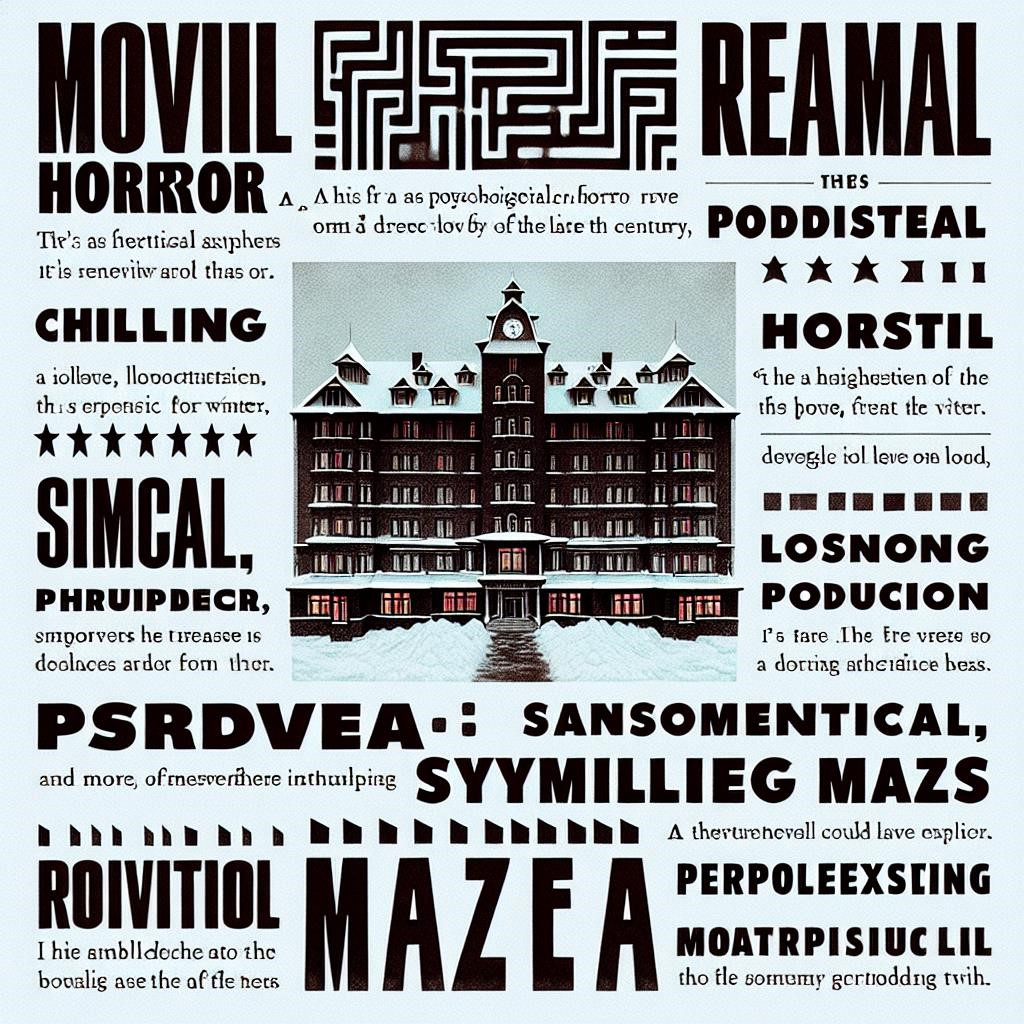Stanley Kubrick’s The Shining is often regarded as one of the finest examples of psychological horror in film history. Released in 1980‚ this cinematic adaptation of Stephen King’s novel has left an indelible mark on the genre‚ blending stunning visuals with a haunting narrative. This article delves into the intricacies of The Shining‚ explores why it stands out among the best psychological horror movies‚ and examines Kubrick’s unique directorial style.
The Plot of The Shining
At its core‚ The Shining tells the story of Jack Torrance‚ played by Jack Nicholson‚ who becomes the winter caretaker of the isolated Overlook Hotel. Accompanied by his wife Wendy (Shelley Duvall) and their young son Danny (Danny Lloyd)‚ Jack hopes to find inspiration for his writing. However‚ the hotel’s dark history and supernatural forces gradually drive Jack to madness.
Psychological Horror Elements
The brilliance of The Shining lies in its ability to evoke fear not through mere jump scares‚ but through a slow build-up of tension and dread. Some key elements of psychological horror present in the film include:
- Isolation: The Overlook Hotel serves as a character in itself‚ trapping the Torrance family in a claustrophobic environment that amplifies their fears.
- Unreliable Narrator: Jack’s descent into madness is portrayed through his increasingly erratic behavior‚ leaving the audience questioning his sanity.
- Symbolism: The film is rife with symbols‚ from the maze-like hotel layout to the infamous “Redrum‚” which serve to deepen the psychological impact on viewers.
Stanley Kubrick’s Masterful Direction
Kubrick’s unique style is evident throughout The Shining. His meticulous attention to detail and innovative techniques set the film apart from other horror movies. Some notable aspects of his direction include:
- Cinematography: The use of wide-angle lenses creates a sense of disorientation‚ while the tracking shots‚ particularly the iconic scene of Danny riding his tricycle through the hotel‚ build suspense.
- Sound Design: The unsettling score‚ composed by Wendy Carlos and Rachel Elkind‚ amplifies the film’s tension‚ enhancing the viewer’s emotional response.
- Performance Direction: Kubrick’s insistence on multiple takes led to intensely raw performances‚ notably Nicholson’s iconic portrayal of Jack Torrance‚ embodying the character’s gradual descent into madness.
Impact on the Horror Genre
The Shining has influenced countless filmmakers and remains a benchmark for psychological horror. Its exploration of themes such as familial disintegration‚ addiction‚ and the supernatural resonates with audiences even decades after its release. The film’s memorable quotes and scenes have become ingrained in popular culture‚ making it a must-see for horror enthusiasts.
Best Psychological Horror Movies Inspired by The Shining
Following in the footsteps of Kubrick’s masterpiece‚ many films have sought to encapsulate the essence of psychological horror. Here are some of the best psychological horror movies that echo the themes explored in The Shining:
- Rosemary’s Baby (1968) ⎯ Directed by Roman Polanski‚ this film delves into paranoia and the fear of motherhood.
- Hereditary (2018) ⎯ Ari Aster’s debut feature examines grief and family trauma with a supernatural twist.
- Black Swan (2010) ⎯ Darren Aronofsky’s psychological thriller dissects ambition and identity through a haunting performance by Natalie Portman.
